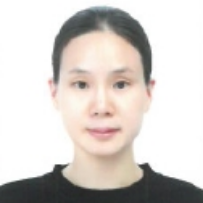David Goedicke
Specializing in experience prototyping and qualitative research to investigate human–technology interaction. He has created immersive VR/XR-based simulations to explore how users interact with autonomous systems.

Stacey Li
Working on fine-grained qualitative research methods to investigate interactions, identifying multimodal signals that inform the development of proactive digital assistants for task support.
Donald Degraen
Investigates methodologies that extend visual aesthetics design with tools for haptic aesthetics. Has explored perceptually-aware haptic design to enable both physical artifacts and virtual experiences.
Kevin John
Developing data-driven tools and graphical interfaces for haptic designers, emphasizing interactive and adaptive feedback and streamlining iteration and ideation.
Yuta Sugiura
Focuses on tangible user interfaces and interactive devices, developing ambient intelligence that enhances human behavior and interaction.

Tian Min
Works on human activity recognition with wearable sensors and motion guidance, exploring new interactive interfaces through innovative sensing technology.
Hyunyoung Kim
Researches digital fabrication, shape-changing interfaces, and tangible user interfaces, exploring how physical and digital elements combine to help lay users fabricate novel interactive objects.

Sonya S. Kwak
Designs human–robot interaction for social robots and robotic products, with an interest in service planning via the Internet of Robotic Things.
Valkyrie Savage
Focuses on tangible device design and digital fabrication, creating custom input devices tailored to users’ needs and contexts through sensing technologies.

Tom Igoe
Covers networks, environmental/social impacts of technology, and lighting design. Co-founder of the Arduino platform and major contributor to open-source hardware development.
David Sirkin
Works on human–robot interaction, automated vehicles, and interactive object design, exploring new methodologies like robotic furniture and heads-up displays.
Wendy Ju
Researches human–robot interaction and automated vehicle interfaces, innovating early-stage prototyping methods to understand user responses before systems are built.
Stefan Schneegass
Focuses on usable security & privacy, wearable computing, cross-reality, and autonomous systems within Human–Computer Interaction.
.